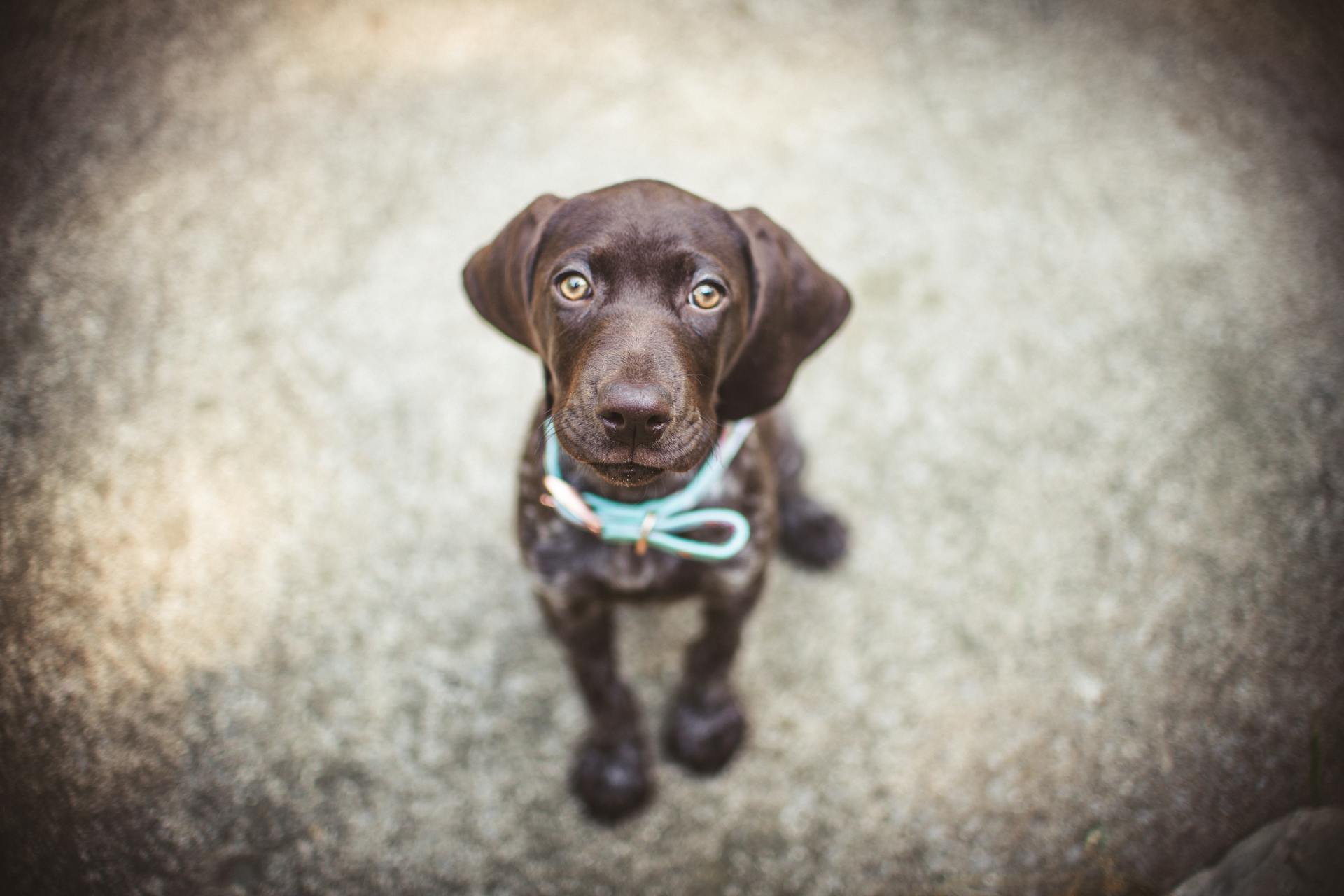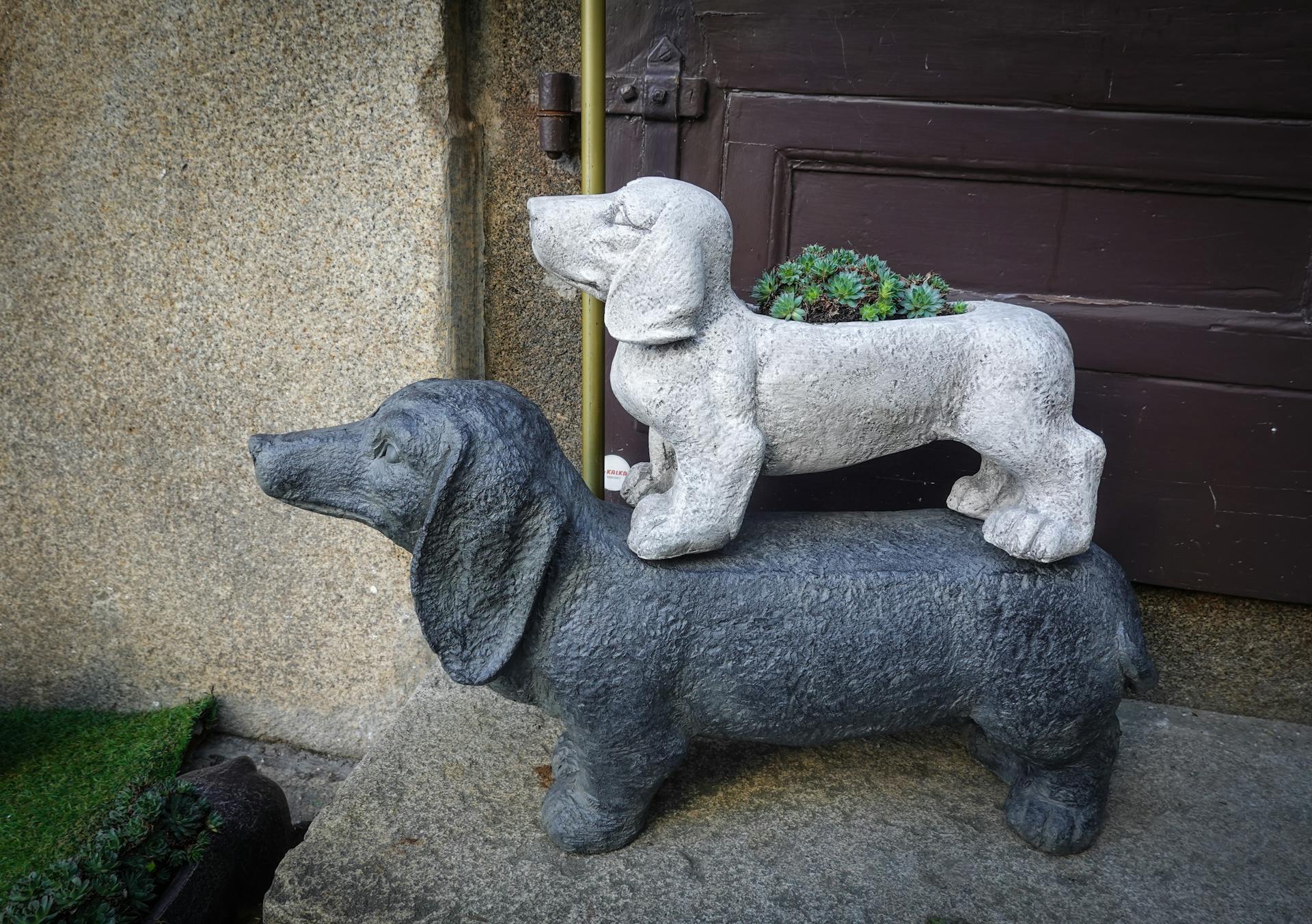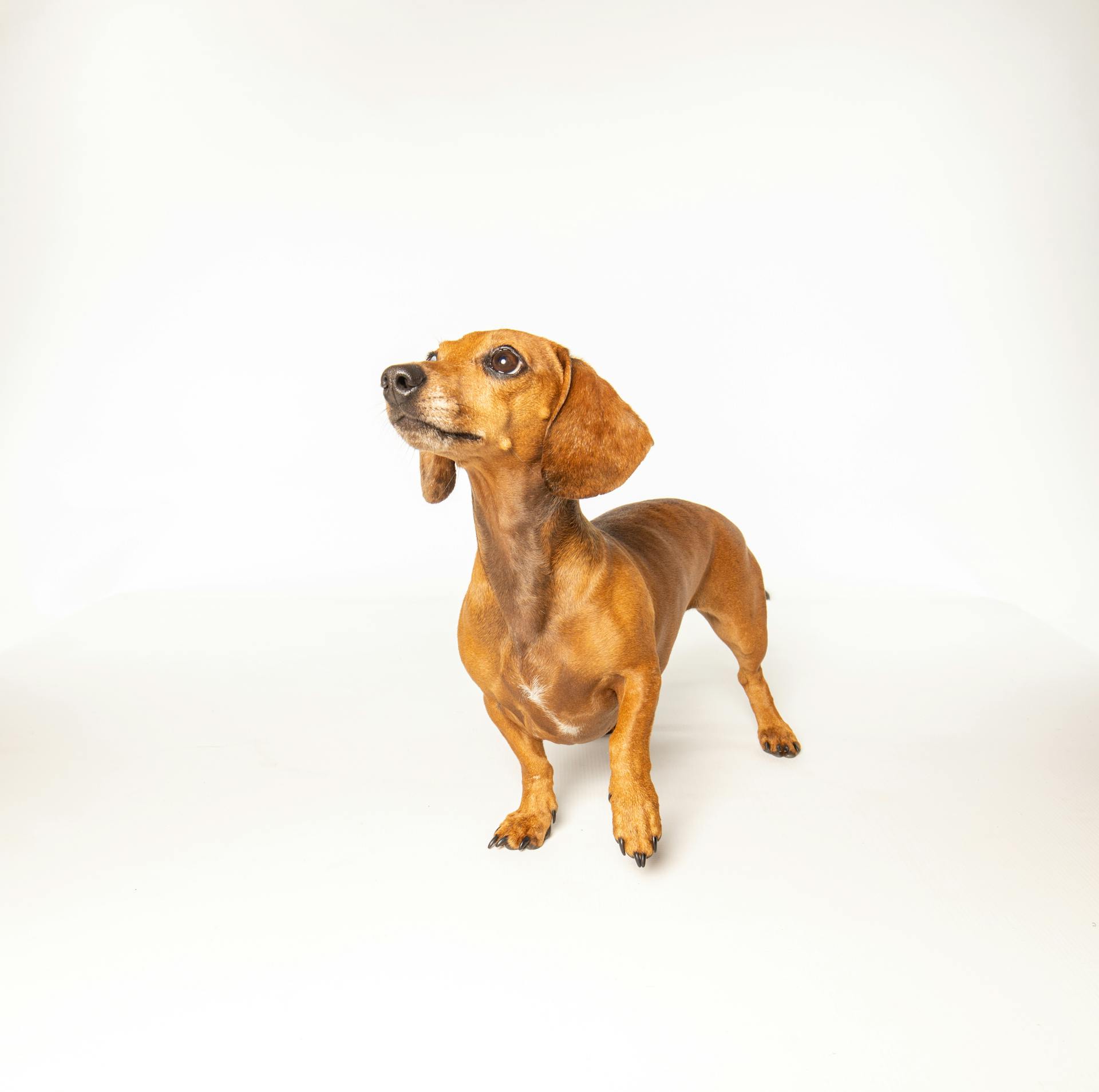
Dachshunds are a popular breed for many pet owners, and for good reason. They're loyal companions, requiring regular exercise to stay happy and healthy.
Dachshunds are relatively small in size, typically weighing between 16 and 32 pounds, and standing between 6 and 10 inches tall at the shoulder. This makes them a great fit for apartment living or homes with small yards.
Despite their small stature, dachshunds are known for their bold and energetic personalities. They require regular exercise to keep them from getting bored and destructive.
You might enjoy: How Much Exercise Do Dachshunds Need
Origin and History
The Dachshund originated in Germany as a hunting dog, bred to track and hunt close to the hunter, much like the Basset Hound in France. They were developed from the German schweisshund, a shorter-legged version of their ancestor.
The Dachshund's ancestors were crossed with terrier and spaniel breeds to gain certain hunting qualities and coat types. This breeding resulted in the wirehaired and longhaired coat types we see today.
Suggestion: Dachshunds Badger Hunting
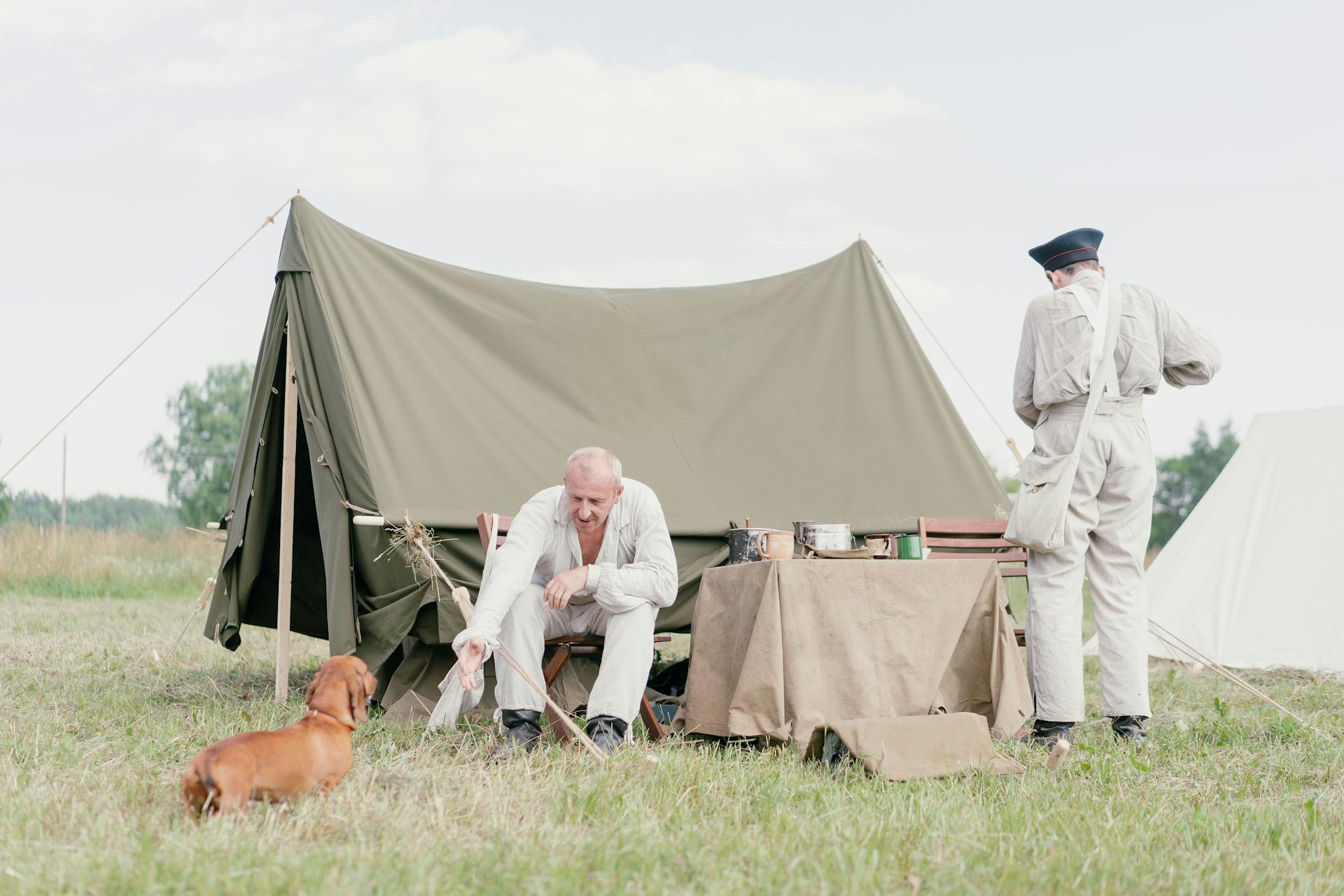
The Dachshund has been helping hunters and families since the Middle Ages, doing everything from tracking and going to ground for game to protecting the homestead. They were used to hunt badgers and wild boars.
The standard Dachshund was primarily bred as a tracker, while the miniature was bred down to hunt rabbits and go to ground. This size variation allowed for different hunting purposes.
A Dachshund's long, slender body and clever personality made it a formidable opponent for badgers, foxes, and hares. The breed's history dates back around 600 years, according to the American Kennel Club.
See what others are reading: What Were Dachshunds Originally Bred for
Physical Characteristics
Dachshunds are known for their short and stout form, a result of being bred to burrow into the dens of prey.
Their unique body shape makes them stand much longer than they do tall.
The breed comes in three different coat types: smooth, longhair, and wirehair.
Smooth dachshunds have a short, shiny coat that comes in a variety of colors and patterns, including solid red or cream, black and tan, and dappled.
Curious to learn more? Check out: Short Haired Schnauzer
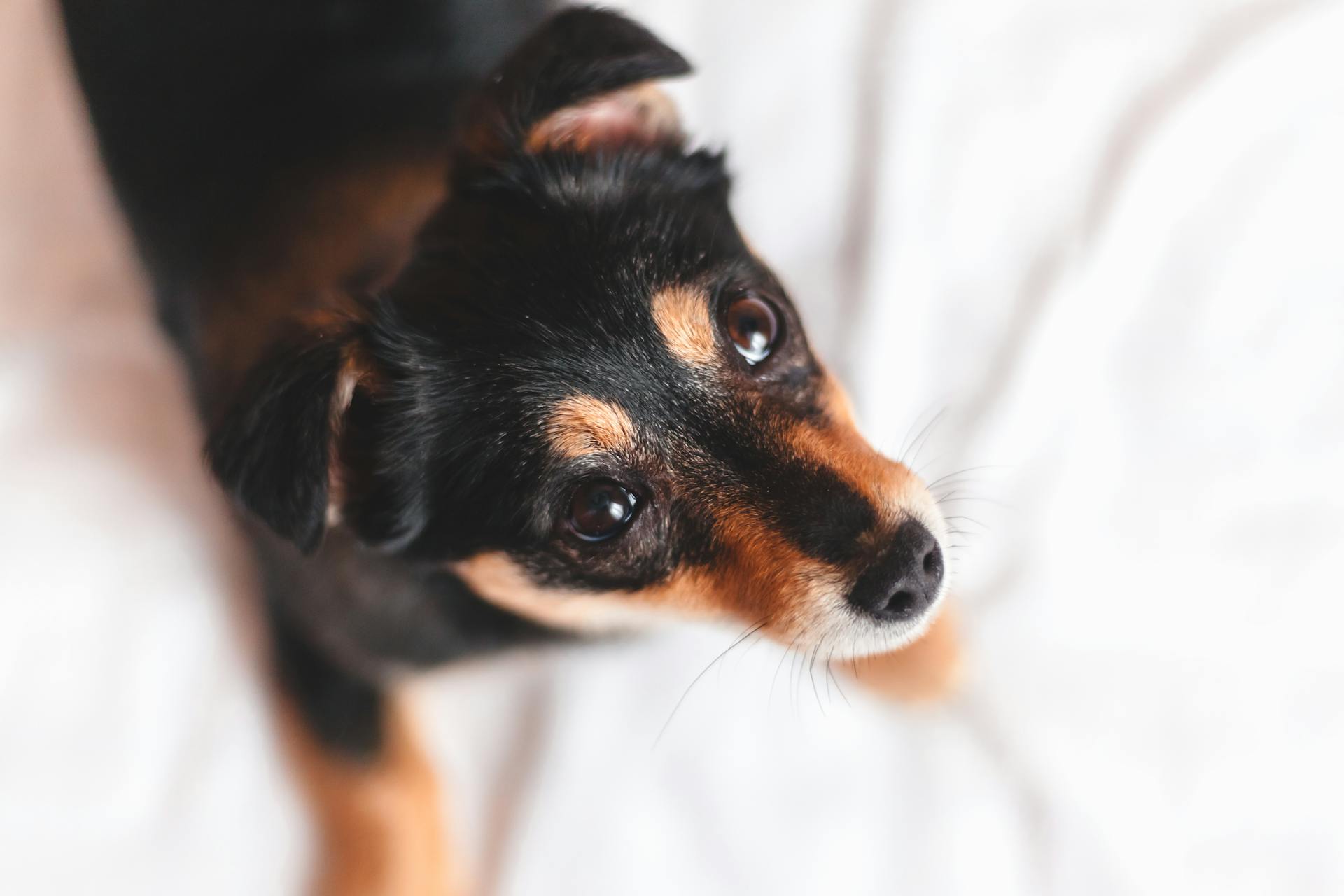
Wirehaired dachshunds have a soft undercoat overlayed by a short, thick, and hard top coat with a wiry texture, and they often have a prominent beard and eyebrows.
Longhaired dachshunds have sleek, shiny, often wavy hair that's longer on the ears and under the neck, body, and behind the legs.
You might like: How Often Do Dachshunds Go into Heat
Size
Dachshunds come in two main sizes: Standard and Miniature. Standard Dachshunds typically weigh between 16 and 32 pounds.
The Miniature Dachshund weighs 11 pounds or under at maturity. This is the official weight classification for Miniature Dachshunds.
Some Dachshunds fall into a category called Tweenies, weighing between 11 and 16 pounds. However, Tweenies are not an official classification.
While some breeders market exceptionally small Dachshunds as Toy Dachshunds, this is purely a marketing term and not a recognized designation.
See what others are reading: Standard Poodle Facts
Appearance
Dachshunds are known for their short and stout form, making them a beloved breed around the world.
Their unique body shape allows them to burrow into dens of prey, a trait bred into them in Germany.
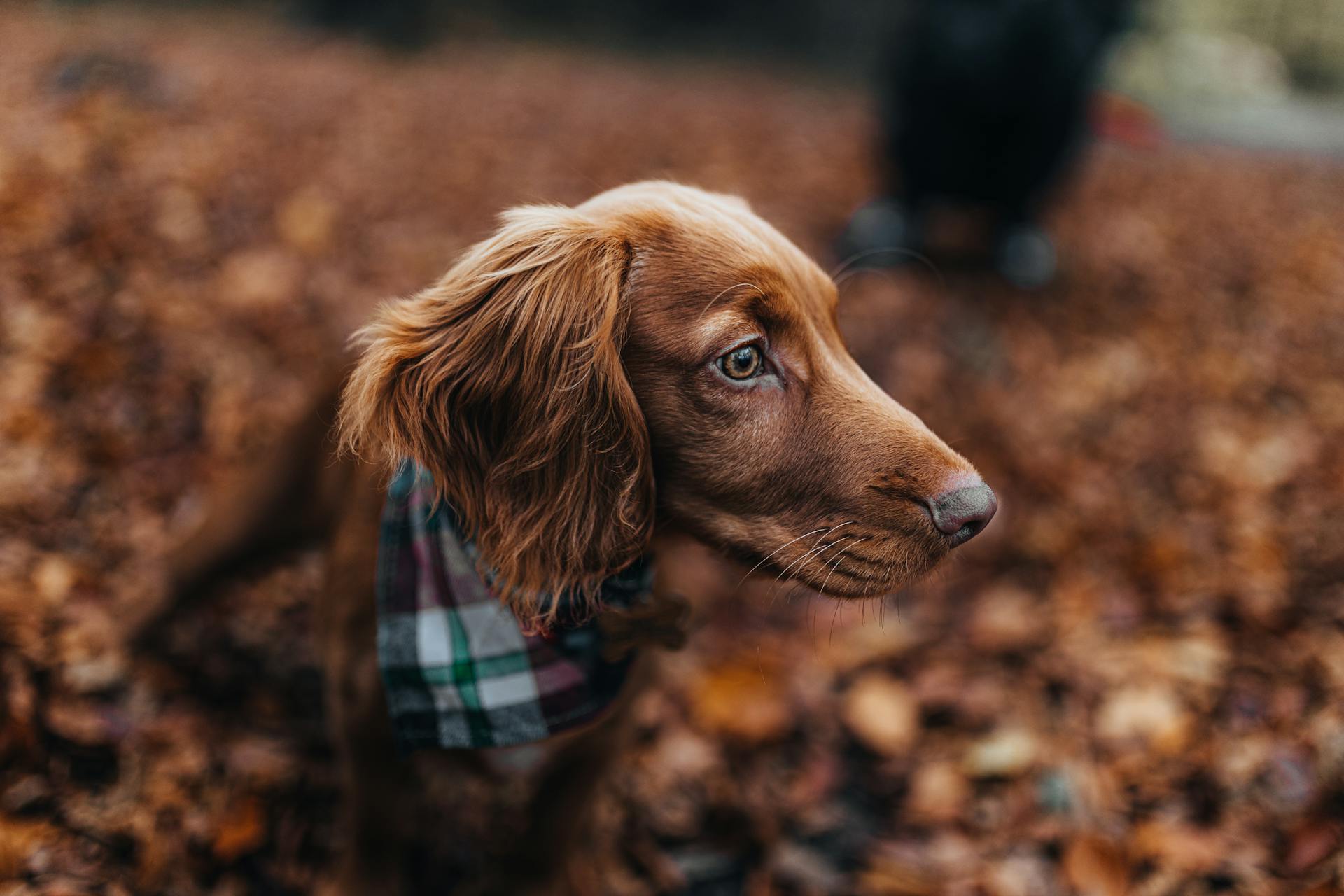
Smooth dachshunds have a short, shiny coat that comes in a variety of colors and patterns.
They can be solid red or cream, black and tan, dappled, brindle, or sable, and the color of their eyes varies based on their coat color and pattern.
Wirehaired dachshunds have a distinctive beard and eyebrows, and their wiry coat texture is a key characteristic.
Longhaired dachshunds have sleek, shiny, often wavy hair that's longer on their ears and under their neck, body, and behind their legs.
All three coat types - smooth, wirehair, and longhair - come in the same array of colors and patterns.
See what others are reading: Dachshund Dapple Colors
Personality and Temperament
Dachshunds are known for their lively and alert personalities, which make them great companions. They are also naturally protective of their family, whom they love dearly.
Their terrier-like heritage makes them fearless and relentless, but also a bit reckless at times. This can make them difficult to train, but they respond well to rewards.
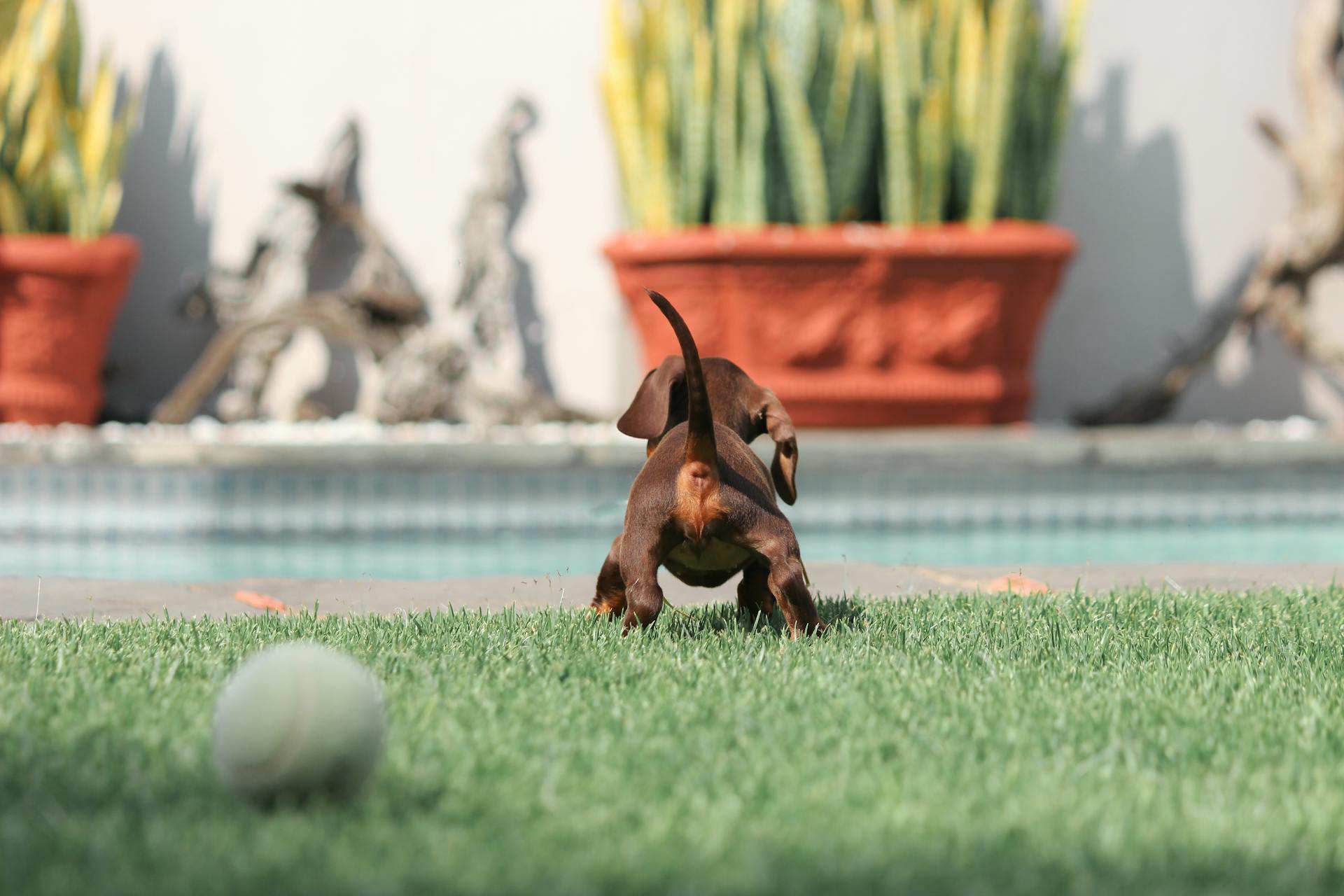
Dachshunds are energetic and playful, and with sufficient exercise, they can be quiet house dogs and sofa companions. However, they tend to be aloof with strangers and may not be welcoming to visitors and unfamiliar children.
The wirehaired variety tends to be even more terrier-like, being more brash and feisty, while the longhaired variety is generally less terrier-like and more docile and affectionate. Miniatures are more likely to be timid, although this is still uncommon.
Their clever and courageous nature makes them entertaining and fearless, but they also want to cuddle with their people most. This characteristic often outweighs their stubbornness and insistence on having their own way.
Socialization is key to ensuring your Dachshund grows into a well-rounded dog. Exposing them to many different people, sights, sounds, and experiences when they're young helps them polish their social skills.
Dachshunds can be great with kids, depending on how well the kids behave, but it's essential to teach children how to properly interact with dogs and always supervise them when playing with any dog.
Expand your knowledge: Are Dachshunds Good with Kids
Care and Upkeep
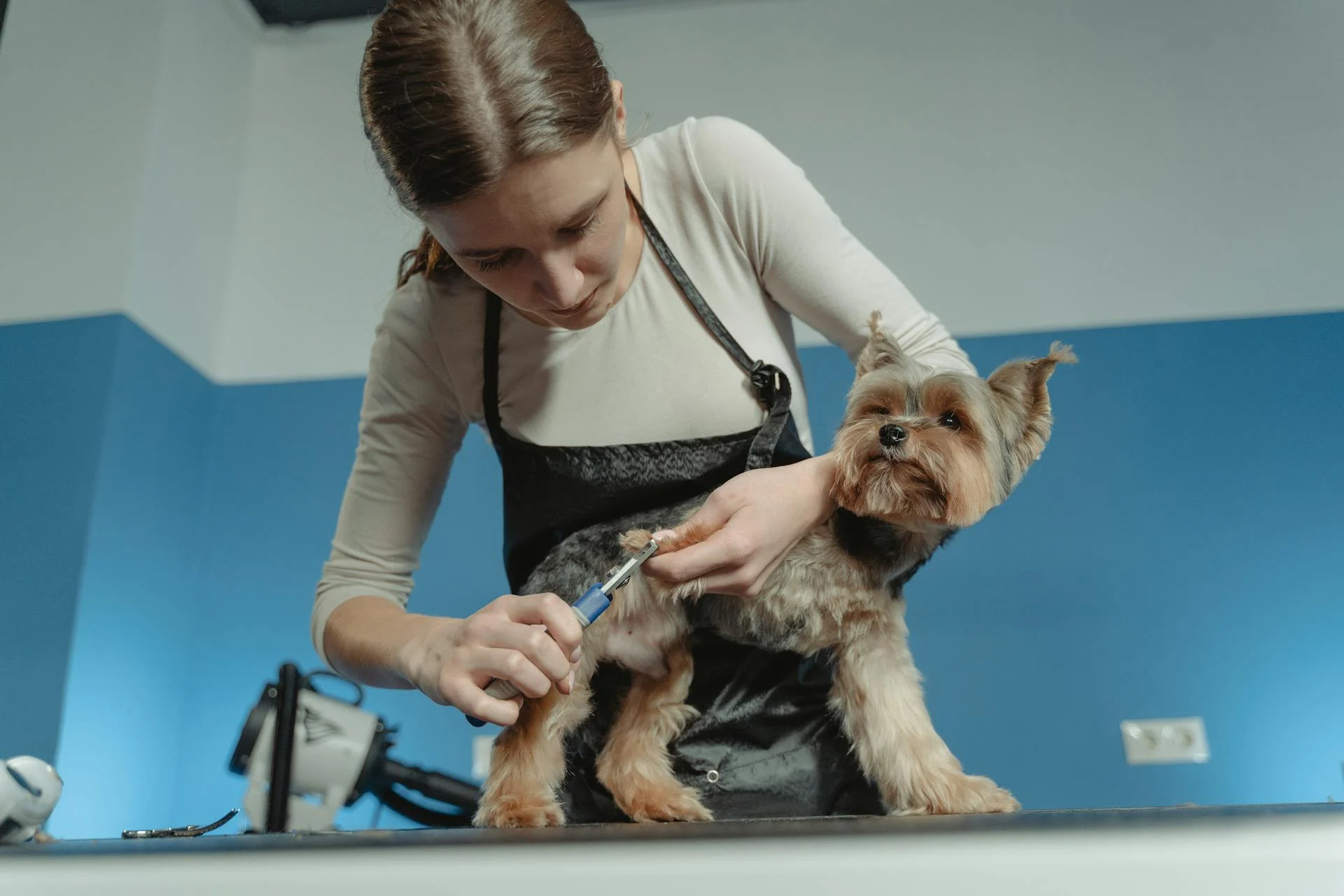
Dachshunds require a daily chance to run, sniff, and investigate, preferably in a fenced yard supplemented with leash walks.
A miniature longhair variety is perhaps better suited for apartment living, but other miniature varieties might also do well in that environment.
Daily walks are essential for all Dachshunds, and they should not be let off leash in unfenced areas due to their independent nature and tendency to follow scent trails.
Dachshunds enjoy a variety of games, including chasing balls and participating in sports that test a dog's hunting abilities, such as the barn hunt.
Regular grooming is necessary, with the smooth variety requiring only occasional brushing to remove dead hair, the longhair variety needing to be combed once or twice weekly, and the wirehaired coat needing weekly combing and occasional stripping.
Preventing obesity is crucial, and Dachshunds should have active lives to avoid back problems, such as intervertebral disk disease (IVDD), which is a common issue in the breed.
Dachshunds should avoid movements that place stress on their back, including jumping on or off furniture, running up or down stairs, and sideways or twisting torque of the spinal column.
Check this out: Facts about Miniature Schnauzers
Care
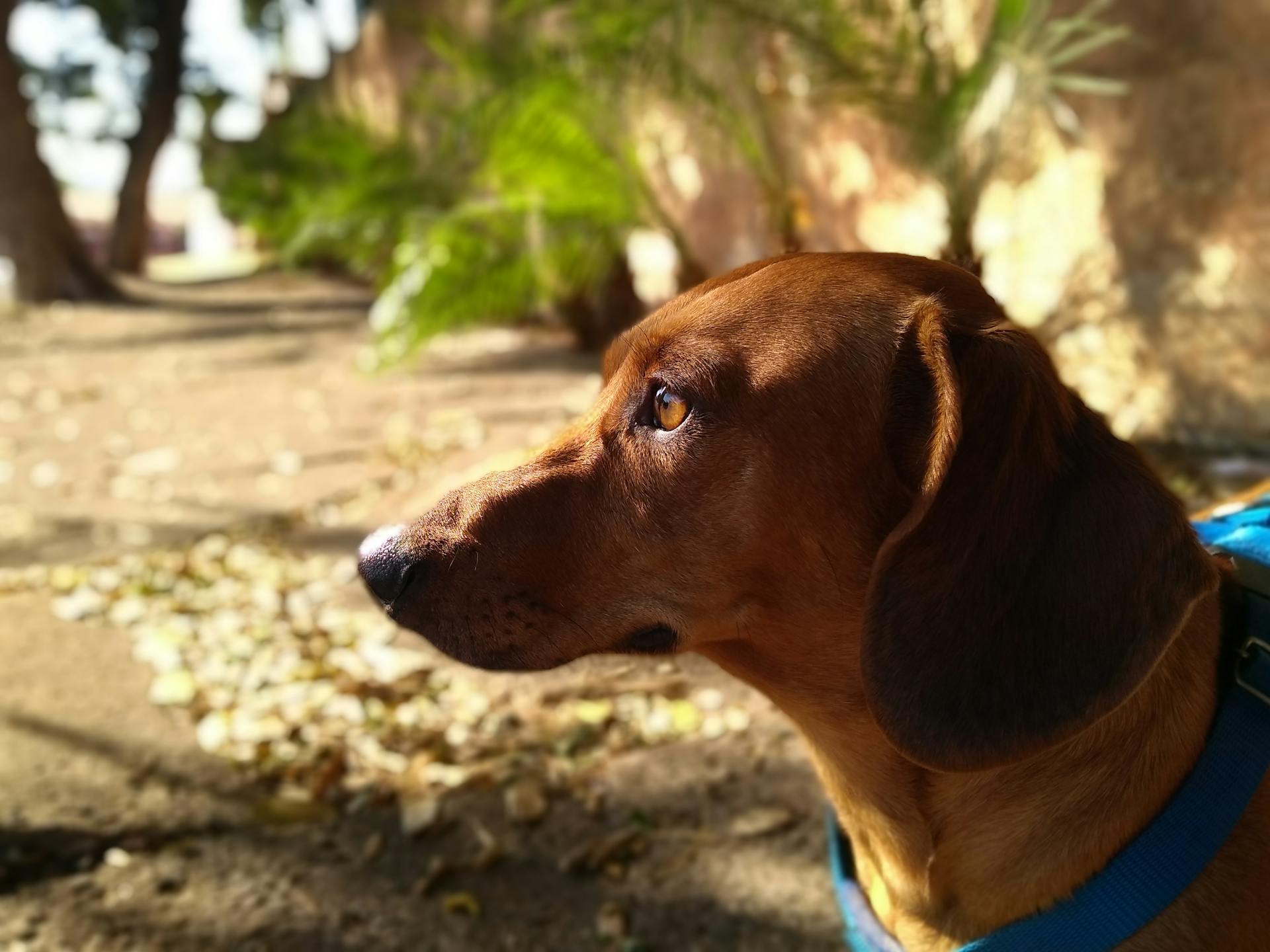
A Dachshund's daily routine should include a chance to run, sniff, and investigate, preferably in a fenced yard supplemented with leash walks.
Daily walks are a must, especially for miniature varieties that may thrive in apartment living.
Dachshunds enjoy a variety of games, including chasing balls, but they especially love sports that test a dog's hunting abilities, such as the barn hunt.
Regular grooming is essential for Dachshunds, with the longhair variety requiring weekly combing and the wirehaired coat needing weekly combing and occasional stripping.
Dachshunds should avoid movements that place stress on the back, such as jumping on or off furniture or running up or down stairs.
Preventing obesity is crucial, and Dachshunds should have active lives with regular exercise.
All Dachshunds should be bathed sparingly, no more than once a month, to prevent dry skin.
Regular brushing is a good time to check for things like coat sheen, nail length, and ear and dental health.
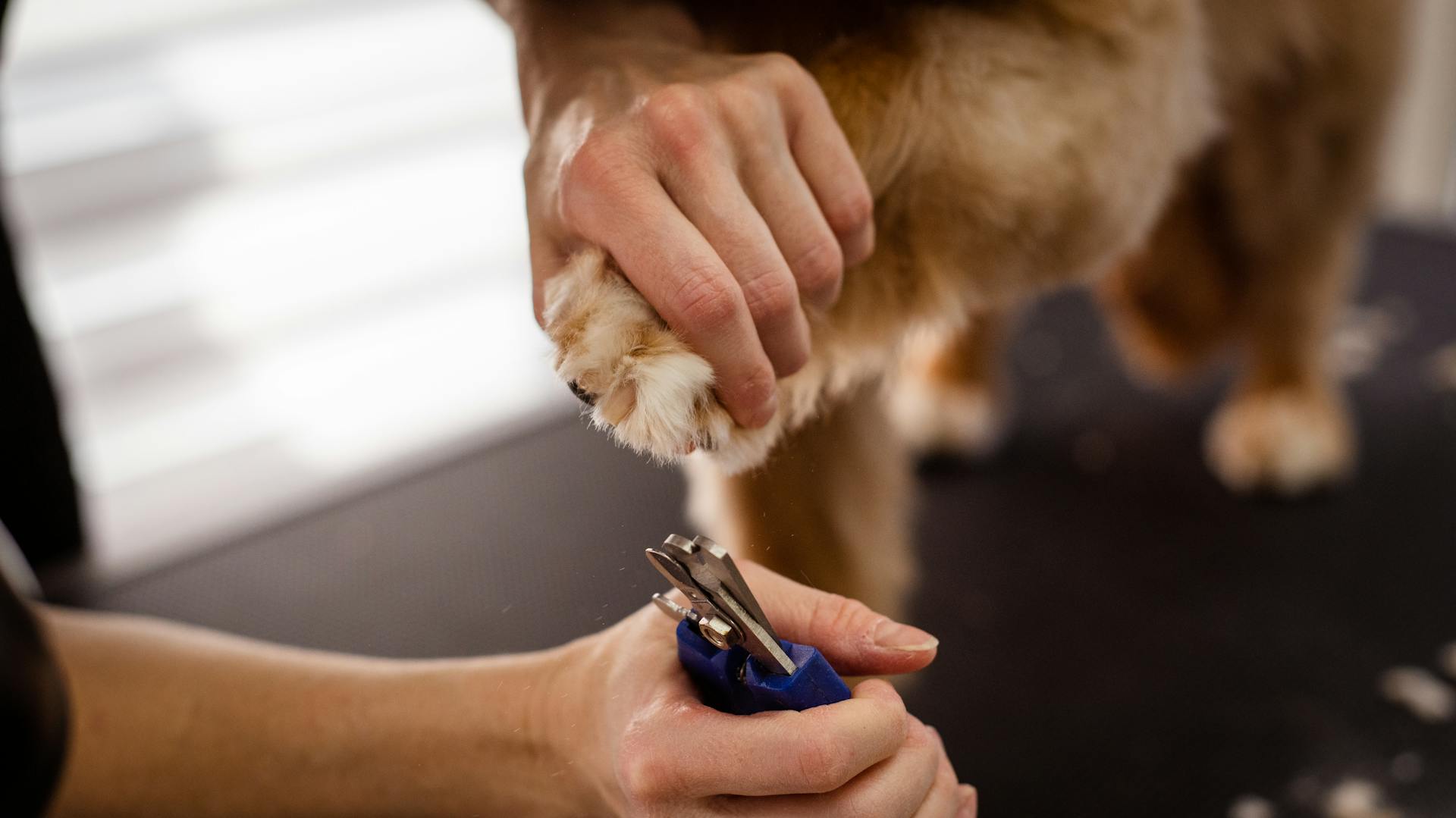
Dachshunds require extra weekly care to their ears, as their floppy shape can prevent proper air circulation and lead to infections.
Dachshunds can be eager to learn most obedience training, but it's essential to keep things positive and fun.
Using a toy as a reward can be an effective motivator for Dachshunds, as they are predators and respond well to instinctual training.
Two half-mile walks a day (about 10 minutes each) is a good amount of daily exercise for Dachshunds.
Crate training is helpful for housetraining and preventing destructive behavior, but it should not be used as a substitute for regular exercise and socialization.
Here's an interesting read: Crate Training Dachshund
Feeding
Feeding your Dachshund is an important part of their care and upkeep. The recommended daily amount of food is between 1/2 to 1 1/2 cups of high-quality dry food a day.
Dogs are individuals, just like people, and they don't all need the same amount of food. A highly active dog will need more than a couch potato dog.
The quality of dog food you buy also makes a difference - the better the dog food, the further it will go toward nourishing your dog, and the less of it you'll need to shake into your dog's bowl.
Expand your knowledge: Do Long Haired Dachshunds Need Haircuts
Frequently Asked Questions
Why are Dachshunds so special?
Dachshunds are special due to their unique combination of bravery, cleverness, and playfulness, making them excellent family pets. Their adaptability and moderate energy levels also make them a popular choice among dog owners.
What is a fact about sausage dogs?
Dachshunds, also known as sausage dogs, were originally bred to hunt badgers. They have a unique history and characteristics that set them apart from other breeds.
What do sausage dogs love?
Dachshunds love companionship and affection, making them loyal and loving family pets.
Are sausage dogs clever?
Yes, Dachshunds are intelligent and problem-solvers, but their independent nature can make training a bit more challenging.
What two breeds make a sausage dog?
The smooth-haired dachshund is believed to have originated from a cross between a Pinscher and a Bracke, or possibly a short Bruno Jura Hound and a Pinscher. Its exact ancestry is still a topic of debate among breed historians.
Featured Images: pexels.com
